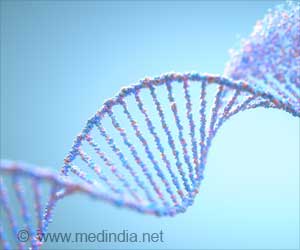- The STORK-A algorithm can detect if an in vitro fertilized embryo has a normal or aberrant number of chromosomes
- The technique is non-invasive and has a 70% accuracy rate
- This artificial intelligence model contributes to the efficacy of in vitro fertilization
A non-invasive artificial intelligence approach for the prediction of human blastocyst ploidy: a retrospective model development and validation study
Go to source). Aneuploidy, or having an abnormal number of chromosomes, is a primary reason embryos created from in vitro fertilization (IVF) fail to implant or result in a healthy pregnancy. One of the current approaches for diagnosing aneuploidy includes biopsy-like sampling and genetic testing of cells from an embryo—a method that increases the expense of IVF and is invasive to the embryo. The novel STORK-A algorithm, presented in a paper published on December 19, 2022 in The Lancet Digital Health, can help detect aneuploidy without the drawbacks of biopsy. It operates by evaluating microscope images of the embryo and integrating information about maternal age and the IVF clinic’s grading of the embryo’s appearance.
According to the Centers for Disease Control and Prevention, over 300,000 IVF cycles will be done in the United States in 2020, resulting in approximately 80,000 live births. IVF specialists are constantly looking for ways to improve success rates and produce more successful pregnancies with fewer embryo transfers—which necessitates the generation of better embryos for identifying viable embryos. Microscopy is currently used by fertility clinic workers to screen embryos for large-scale defects that correspond with poor viability. To get information about the chromosomes, clinic staff may also use a biopsy approach termed preimplantation genetic testing for aneuploidy (PGT-A), mostly in women over the age of 37.
Harnessing Artificial Intelligence Technology for IVF Embryo Selection
Investigators from the Center for Reproductive Medicine collaborated with colleagues from the Englander Institute to create a computer-based approach to embryo assessment that capitalized on the Embryology Laboratory’s pioneering use of time-lapse photography.In a 2019 study, the researchers built an artificial intelligence (AI) program, STORK, that could judge embryo quality roughly as well as IVF clinic professionals. For the latest study, they developed STORK-A as a potential alternative for PGT-A or as a more selective means of deciding which embryos should have PGT-A testing.
The new STORK-A algorithm makes use of microscope images of embryos taken five days after fertilization, clinic staff ratings of embryo quality, the mother’s age, and other information routinely gathered throughout the IVF process. Because it uses AI, the system automatically ‘learns’ to associate specific aspects of the data, often too subtle for the human eye, with the risk of aneuploidy. The scientists trained STORK- A on a dataset of 10,378 blastocysts, whose ploidy status was already known. They estimated the algorithm’s accuracy in predicting aneuploid versus normal-chromosome ‘euploid’ embryos at about 70% (69.3%) based on its performance. STORK-A was 77.6 percent accurate in predicting aneuploidy involving more than one chromosome (complex aneuploidy) versus euploidy.
The work serves as proof of concept for a currently experimental strategy. Standardizing the use of STORK-A in clinics would necessitate clinical research comparing it to PGT-A as well as FDA approval—all of which would take years. However, the new method represents a step forward in making IVF embryo selection less dangerous, subjective, less expensive, and more accurate.
“We believe that ultimately by using this technology we can reduce the number of embryos to be biopsied, reduce the costs, and provide a very good tool for consultation with the patient when they need to decide whether to do PGT-A or not,” said Dr. Zaninovic.
“This technology is being optimized with the hope that at some point its accuracy will be close to that of genetic testing, which is the gold standard and is more than 90 percent accurate,” said co-author Dr. Zev Rosenwaks, director and physician-in-chief of the Ronald O. Perelman and Claudia Cohen Center for Reproductive Medicine at NewYork-Presbyterian/Weill Cornell Medical Center and Weill Cornell Medicine, and the Revlon Distinguished Professor of Reproductive Medicine in Obstetrics and Gynecology at Weill Cornell Medicine. “But we realize that this goal is aspirational.”
References :
- A non-invasive artificial intelligence approach for the prediction of human blastocyst ploidy: a retrospective model development and validation study - (https://www.thelancet.com/journals/landig/article/PIIS2589-7500(22)00213-8/)
Source-Medindia
















